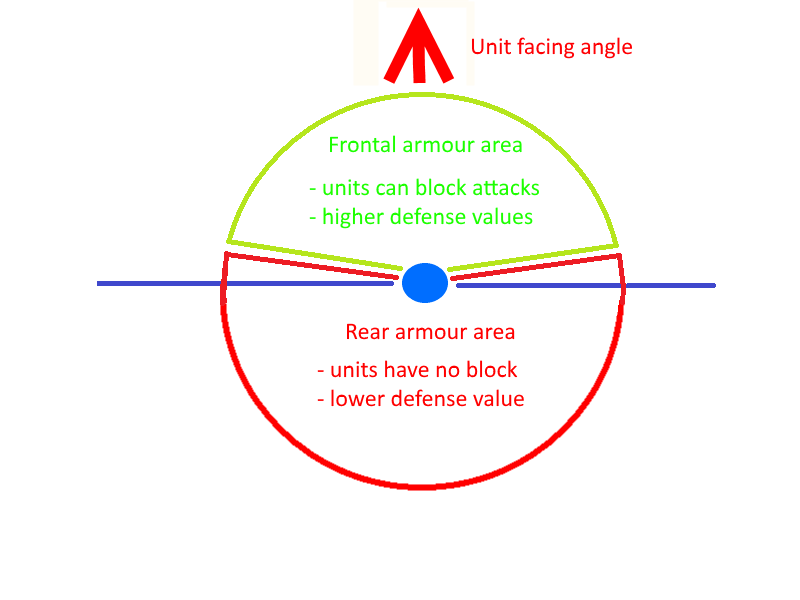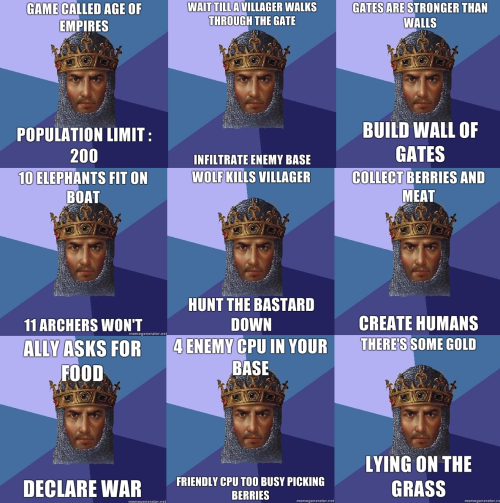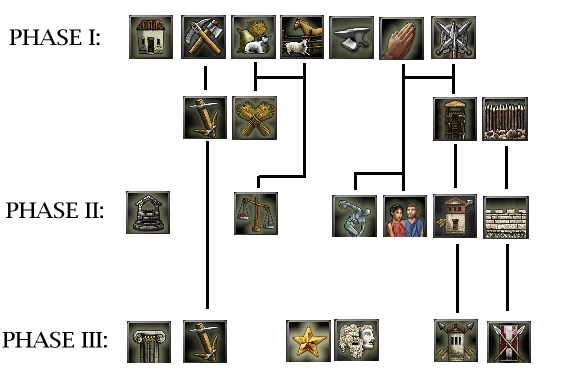Leaderboard
Popular Content
Showing content with the highest reputation on 2017-03-12 in all areas
-
5 points
-
Nice to see this! I'll repeat something I said in an internal discussion related to possible campaigns. You neither need to necessarily have the player defeat the enemy to "win" (or rather end) a scenario in a campaign, nor are we limited to telling the story from only one side. Switching sides might be a lot more relevant for a possible Second Punic War campaign though.3 points
-
3 points
-
Im a guy that lives in strange country called Lithuania. I noticed this project just today by watching videos on youtube, i saw this game and checked it out. And i notice its open source and looking for volunteers. How could i join them? I know how to create 3d modules with blender, maybe i can help somehow if there is free space for a 3d moduler. Here is some pictures of my small project2 points
-
2 points
-
2 points
-
Performance has had noticeable increase since the past 2-3 alpha release. It's getting better. Pathfinding and AI is still bottleneck.2 points
-
My main problem with Stone and Metal being too close to the Civic Center is that a lot of new players think that those things are necessary to be gathered immediately (which they are not). I'm talking from experience and from watching youtube players who are new to the game. Having some basic Food and Wood resources nearer while having the other resource types a bit farther from your main base might also create a tutorial-esque thing for new players: "Oh, I need Stone and Metal to advance / get this type of unit? But I don't see that here. Maybe I have to search the map for it."2 points
-
As promised the concept. 6.100 words of pure gameplay related stuff. Note: As this thread digs REALLY deep in the gameplay development, please read the document carefully and try to comprehend what I've written. I don't want read one liner comments like "idea X on page Y doesn't fit my personal view". You have to look at the concept as a whole instead of nitpicking small details. The layout isn't set in stone, it's meant as an approach to get a red line into the game. And thus it's important to get connections between different game aspects. Edit: the current text layout still isn't 100% like I want it to be but oh well... I'll leave it "as-is". If there is a strange looking paragraph simply ignore it Have fun reading! Part I: Gameplay Analysis “From sticks and stones to an Empire: How to employ a civilization concept for a modern time RTS” Game: 0 AD example faction: Athenians Author: DarcReaver Date: March 5th 2017 Introduction This document aims to summarize the current game mechanics, compare them to the original gameplay/game design concept, identify differences and problems with the current layout and create a solution concept. As some of the proposed concepts and ideas require quite a bit of restructuring or addition of code this is to be taken as a serious roadmap that can be followed for all civilizations in the future. If there are technical difficulties are not solvable by volunteers I’d honestly suggest to start another kickstarter campaign to hire a couple of professional coders who are then assigned the tasks that the internal team cannot solve. I know that this has been done in the past and failed, but I think the failure at least partly has to do with the fact that there is no “greater aim” for the game in its current state. There is no direction the game, so there is no amount of code able to finish it, thus the money would have gone to waste anyways (note that this is my personal opinion). But before doing kickstarters, or hiring coders, artists or whatever there has to be clear in which direction the game is heading, which leads us to this document. I believe there has to be a separate discussion on the kickstarter campaign some other time. Don’t get the wrong idea, I know that the proposed concepts below require extensive work and testing. However, please keep in mind that I’ve taken the original gameplay document as reference and adjusted my concepts towards implementation of the intended features. It’s just that my personal believe is that 0 AD in its very heart is not intended to be a “mass up an army and throw them into battle” style RTS. And to be honest – why would someone need another macro oriented game? We already have Age of Empires II HD, Stronghold, RUSE, Starcraft II and a couple of other games which already please that kind of player audience. And trying to mess with those games will most likely lead to a defeat since they’re made by professionals with years of experience in the game creation and have/had huge budgets available to polish their products. The result of this should be clear: 0 ad has to follow its own path instead of trying to copy and combine aspects from other games. So, let’s move on and summarize the current status of the game: General observations: City Borders When starting a game, the player base is surrounded by City borders. Inside the borders, construction of buildings is allowed. The border range can be increased by techs, certain buildings and progression in the city phases. Resource system & starting economy Basic soldiers, cavalry and women can harvest resources. The earlygame revolves around building basic infantry or women and assigning them to resource spots. The training speed is fast, resulting in high counts of collecting villagers in the earlygame (more than 30 or 40 units with 8 minutes). Resources are used to create more buildings and soldiers and research economic and military technologies. Houses and other buildings have comparably long construction times. Various economic upgrades can improve different aspects of gathering processes and are fast to research. Gameflow Most essential military units are available in the first Phase, allowing very early rushes with a variety of units. Building times are very high for buildings and very low for units. Resource costs are mostly the same for all types of military units. The available buildings allow defensive gameplay (farms, citizen soldiers, houses can garrison). The capturing mechanic helps raiding by being able to take over enemy buildings. As the game progresses there are more units unlocked to use. Every building is required to tech up. Siege is available very late, until then the mixture of capturing buildings and raiding economy is the way to go. Synopsis, current faction content: Buildings: Phase I: Agora – main building - House – provides population - Sitobolon – farm tech building and drop off point for food - storehouse – economic tech building and drop off point for minerals, lumber - Agros – unlimited food production - Epaulos – tech building for herdables/huntables/cavalry - Watchtower – scout building - Limen – harbor building - Strategeion – main military building Phase II: - Blacksmith – military tech building - Naos – advanced tech building - Emporios – market - Pyrgion – Defense tower - Theilos – defensive walls - Stoa Hellenica – specialist barracks building Phase III: - Epitheikisma – Fortress - Wonder – wonder building - Gymnasion – advanced military building - Theatron – economic civic tech building - Prytaneion – economic military special building This is the complete building number that is available to a player when choosing the Athenian civilization, 19 buildings. To unlock Higher City phases a number of buildings of the previous phase are required. Units: Phase I: - Hoplites (spearmen) - Peltastes Thrax (skirmisher) - Prodromos (ranged spear cavalry) - Psilos (slingers) Phase II: - Rhomphaiaphoros (heavy melee) - Thyreophoros (heavy skirmisher) - Iatros (healer) - Hippei (melee cavalry) Phase III: - Oxybeles (scorpion) - Lithobolos (catapult) - Epilektos (phalanx city guard unit) - Toxotes Skythikos (ranged archer) - Toxotes Kretikos (ranged archer) - Epibatos (naval infantry) - Heroes (Themistokles, Perikles, Iphikrates) Right now, the player starts off with basic infantry (hoplites), basic cavalry (Prodromos) and a basic ranged attacker (Psilos) without any necessary teching. Building a barracks adds a basic skirmisher (Peltastes) to the mix. Phase two adds healers, a special infantry and a special skirmisher (Rhomphaia/Threophoros), available through a second barracks and cavalry (Hippeis) Phase three unlocks siege (Oxybeles/Lithobolos), a City Guard Phalanx (Epilektos), ranged units (Toxotes Kretikos and Skythikos) aswell as naval infantry (Epibatos) and heroes. Summary of current game mechanic issues (note: “tier” means tech level) City Borders While in theory an interesting concept, the implementation at this stage is limiting the game more than being a useful feature. - Expansion is hard to do (Agoras require Phase II and lots of resources/time to be built) - No good options to expand the city borders apart from spamming houses or barracks - on certain maps it’s impossible to place drop off points for lumber and metal near the first major forest, leading to a low efficiency lumbering early on Result of this feature: Cavalry rushes and booming (don’t expand and spam economic units) are the choices to pick when playing the game. As it’s hard to work towards resources in the center of the map it’s easier to stick to the own borders and produce food with farming and harvest nearby lumber while building more and more economic units. Cavalry is very mobile and useful for harassment. Regular units don’t do the job well because it’s not possible to chase villagers Buildings: - no interconnection of building types: This means that there is no possibility to limit the amount of unit types available to the player. Every unit is trainable quickly, that way there is no interesting unit transition like archers into cavalry into infantry. Of course it’s possible to first field archers then cavalry and then infantry, but this doesn’t require planning or build orders. Just build a barracks and you’re done with your military. - forced construction of building phase buildings does not allow flexibility, players always have to build everything to get access to higher tier: This is an issue for the game duration. There is no possibility to follow a fast tech into a high tier to finish off opponents with superior units, or to deliver a teching advantage. As an example in AoE there are civs which are fit to quickly advance through the ages (like Byzantines, Mongols or Saracens) to field superior units like knights. Combined with the lack of additional military content in phase II the city phase feels dragged out. It takes ages to get through this phase without gaining a significant difference or advantage from phase I. - Building cost- and tech-requirements are unbalanced i.e. a fortress only offers two siege weapons while requiring lots of teching to reach and lots or resources to build. This results in unbalanced strategic options for building progression. Players have to build overpriced or underpriced buildings to get benefits that do not match the initial price. The progression should be: the more important the building the higher the cost should be. Units - Too many units are available at the start Overall the game offers a wide number of different units, but the unit arrangement is strange. In a strategy game the unit strength is usually increased over time, either via upgrades for existing units (called scaling) or by giving access to stronger units. A player starts off with his weakest units and as the game progresses he unlocks more and more powerful units, ultimately with some type of specialist unit that offers a very large advantage in one area. Most units with specific strengths have specific weaknesses which create a so called “rock paper scissor” counter system. The more specialized the unit is the harder the weakness is applied to enable countering it. This is essential for a wellrounded counter system. - Unit upgrades gives too large gaps between unteched and teched units It seems as if the bonuses provided from teching are very large, while unupgraded units are extremely weak, upgraded units almost take no damage compared to them. This is bad, as it requires players to instantly upgrade their units to stand a chance against an opponent, limiting the choice to “mass” weak units instead of choosing to tech up to get a smaller force of more advanced, stronger units. - Heroes come late and require lots of resources for limited effects This is a separate issue and my personal opinion on this matter is that heroes have too little effect on the game. According to the design guide the game takes inspiration from Warcraft III in which heroes have a very large role from the very start of the game. Getting early heroes, leveling them up and fighting the enemy is very important and can decide a match early. The hero system in 0 ad doesn’t nearly as much influence the overall game, which makes me question the reason why heroes are in the game in the first place. - Formations are fiddly and micro intensive The Formations are interesting, as they provide tactical options for fighting, like forming a phalanx to attack melee warriors. It’s a logical thing that there is a necessary minimum of soldiers to form a formation. The problem with the formations right now is that it’s not possible to select units in a formation and ignore units that are not included in the formation. Since units in 0ad are pretty small in a battle there is a constant reforming of formations since new trained units rejoin the formations on double click selection if you reassign the formation. - Unit training times are too quickly, massing troops early game is absolutely possible. Rushing with units from the town center is possible. This dumbs down the game. There is no strategical choice between building a military building path to unlock certain units and an early economic boom defensive playstyle. Instead it’s possible to train relatively potent units from the very start and the “man-spam train” is on track. While creating variety in the early training order this dulls down the tradeoffs that have to be made in the earlygame by players. In a good RTS there is a variety of choices to make. Either train melee units early, train ranged units or try a mobility approach for harassment like cavalry units. Each path means that the other military units are delayed by X amount of time and there is a tradeoff between having more pressure on the enemy or have increased economic power. Since cavalry can also collect food, there is zero disadvantage in training cavalry compared to training economic units. In 0ad there is no delay for fielding other types of units (except for the time to collect the required resources and building time), so army compositions are very flexible. This renders tactical advantages from training certain units useless as they can immediately be countered. I got the feeling this is why there is so much cavalry rushing going on. A mobile early cavalry army allows to put pressure on an enemy, and can only be countered by other cavalry as regular units are too slow to catch up. The mobility of ranged units is high; most skirmisher cavalry and cavalry archers available to the civs at the start. Ranged cavalry can outrun their counters and pick off single units. In RTS players who can choose their battles are in an advantageous position.1 point
-
I spent some time to provide my version of suggestion regarding gameplay improvements. Some of these which I already posted before, have been updated. This is a complete summary about a generic faction, and can be applied to all factions with additions. Aimed at doing the least changes to get maxm benefit in gameplay, while staying true to identity of game. I think except the rank upgrade mechanic, all of this can be implemented in a mod right now without needing much coding or artwork. I have thought hard about all the specifics. If you have doubts about anything, I can explain my position on it. For completeness sake- Here are the list of problems these are aimed at resolving. This is the summary of my suggestion regarding Traders.1 point
-
Looking great indeed! I'll just avoid the English recording since it will be difficult to translate. For consistency with the existing game I'll suggest to only have the on-screen text, can be easily translated and also changed if needed.1 point
-
@Hannibal_Barca: Are they really planned for Alpha 23 or is it just some ancient ticket that happens to have it's milestone to Alpha 23?1 point
-
1 point
-
1 point
-
Hey Folks, My name's Lea, I'm based in Leicestershire, England UK. I'm a degree qualified sound engineer looking to dip my feet into the games industry and would love to help out and work on music and sound effects for your game. I have heavy investments in equipment and software and really need to put it to good use, where better to start :-) Look forward to hearing from you, I'd be happy to answer any questions. All the best Lea1 point
-
Hi Lea, nice to meet you! Sounds promising, where can we listen to your work? Do you have anything (more or less) in the style of the existing 0 A.D. score? Thanks,1 point
-
The textures need be stay in png to save alpha channel. you can replace in skeletal textures folder. you need a review from official team member s to get green light to order a committing. yes December, there works/ contribution have long time than that They haven't review yet.1 point
-
Though we can judge better only after seeing the concept in action. But my current opinion on it is- 5 Resources It might be needed to split metal. though i'm not sure yet. Usually more than 5 resources make a game too complex. Though we can simplify it so that. Only 4 resources matter at a point in game.- Food, Wood, Stone, Iron in early part of game. And Food, Wood, Iron, Silver in late game (after most important structures are built already, and stone is not needed much) Conversely. Maybe this change can wait till the end. After other gameplay improvements are done, this might not be needed. Gathering Dynamics I dont think gathering spots should be limited per resource site. Lets talk about Warcraft 3 for eg- It has only 2 resources- gold, wood. And Pop space. Even in that game only gold mines are limited. not wood. Also all of the gold mines have same graphic, and same value (eg 5000 gold). It has very limited options in terms of economy and economy management. These games are very combat oriented and in general are very different from 0AD. 0AD Map shows a world with realistic terrain. Each resource has a variety of presentation. eg- Stone- Large an small mines of different size. stone runes, statues. Limiting it wouldnt seem logical to player. Population cap I agree population should be restricted by phase. But limiting house to 10 in 1st phase. and multiplying pop capacity in 2nd and 3rd phase is not the correct way, imo. Also military units are not constantly at war. They do gather a bit. or can be idle. Changing so that only gatherers require pop space. and not military. would be changing a lot. It would become a different game altogether. After reading it all. I have realised that though we agree that something seems off about the game currently. Most of us disagree on what are the real issues here. While trying to rectify the situation. We should be careful to not change the game completely if smaller changes can get the desired result. First lets talk about what is good in 0AD. What parts of it appeals to the players. Things which are unique in it, which give its identity.- Things are (mostly) logical. The soldiers are designed to be like what used to be in those times (Citizen-Soldier). There are both male and female gatherers with their respective strengths in gathering based on what would actually be. The resources used in game are all the basic resources which are there. Instead of having only gold and wood like some other games. Though I dont agree with resource cost choices for many units and techs. There is a beautiful terrain composed of different forms of these 4 resources. A player harvests from his surroundings. Not like some games in which most of the terrain is barren and only some focal points have resources. I'm not saying one approach is better or worse. There are different types of RTS- AoE2, BFME2, Warcraft 3. these 3 are very different types of games and play very different. They have their pros and cons. Imo AoE2 had much more strategic depth and replayability than Warcraft 3. I like BFME2 better than these 2, but thats not because of the non existing economy management present in it. Coming back to 0AD. Players appreciate the realism in the game. How many things make sense. It wouldnt be good to lose its identity, if we can help it. So we should first try smaller measure before drastically changing everything and creating a different game. Now about the issues present currently. My view of them- 1) Buildings don't have specific roles. CC can be used to produce military. Barracks is usually built near forests to build workers. This is important because player never has to chose between focusing on economy or on military(by building barracks). everything(eco nd military) is available in all buildings, no variations to allow different strategies. 2) There's no control on the unit production rate from buildings. Especially economic unit production. 3) The citizen soldier concept is not implemented properly. Too much chaos when attacking or defending. 4) Similar to above- the gathering is not done as was intended. Only females created in beginning. only Champions in the end. Citizen soldiers jack of all trades, good at nothing. 5) Eco management is very tough. By this I mean to efficiently use it. An good player in other games would be able to keep resource collected in bank close to zero, by spending them as soon as collected, and using gatherers efficiently by switching them over according to his build order. This task is near impossible in 0AD. First because of 2 types of gatherers- food gatherer and rest. And also because theres no fixed or constant rate of economic growth. The gathers can be trained singly, in batches of 5 or 10, 15 etc. Also the fertility festival tech at house is broken. Also a major population of gatherers also fights. And after fights its usually not clear how many gatherers you lost per resource. 6) Battle strategy is non existent. Currently it includes massing any one type of unit and laming it. Either Javelin cav in beginning, or chariots or sword champions later. This is because of lack of effective counters. Hard countering shouldn't be removed unless Soft countering is ensured by combat mechanics. 7) Imbalance between Champion units and Citizen soldiers. It not only decreases the value of citizen soldiers but also creates imbalance between factions. which have led to a trend to give every faction 4 champions. which doesn't solve the issue but increases it. Champions should have been just a unique unit of each faction. 8) Phase progression doesn't mean much currently. So what, you get champions in phase 3. But its perfectly possible that someone in phase 1 has better economy and beats someone who is in phase 2. 9) Hack and Pierce attack. Pierce attack of an archer and of a spearman are not the same. One is shrugged off by heavy armour rider, one is deadly for the horse. And then siege damage is added to emulate crush attacks. Siege damage to buildings should always be a separate entity. eg it becomes difficult to implement upgrades like fire arrows, which mainly increase siege capacity, and a lesser increase in anti unit damage. Also Units like Mauryan- Yodha which have siege damage only. And become weak against all units inspite of having capacity to cause good crush damage. 10) Trader, Corral. This much comes to mind right now. These are the things which prevent 0Ad from having more depth in strategy and a fun gameplay. I dont think locust gathering as described is important. Though being spread out on map is much better, but it can be achieved with less drastic solutions. Also man spam trains of military units is definitely bad. Because that means units(mostly a single type) are constantly spammed without any tactics and strategy. But this concept is not the same for economic units. To hold a large army your economic support must also be larger. If the gameplay requires to control the distribution of economic units according to build orders and keep redistributing them as needed. then its not a spam, and doesnt matter if the number of units around a mine are more, till it looks realistic. In the end. My view is that- smaller changes should be tried first. which i believe can easily solve the issues I oultined above without changing the feel of the game.1 point
-
1 point
-
You answered my question only partially. So far you have identified most issues with the current gameplay and you have outlined some possible ways for fixing them. That's a good start, but it's still quite far away from a concept that can be implemented. Decision have to be made where multiple alternative solutions have been suggested, dependencies between features have to be identified and clarified, detailed descriptions have to be written per feature etc. If developers want to help, they need very specific and detailed information how a feature should work. Do you think it's realistic to design such a concept, write it down and then also implement it in roughly 6 months (I guess 3-6 is too ambitious)? As I said, it would not be complete yet, but it should be complete enough to give a good impression of the final gameplay. If you don't know how long it would take to implement something, that's fine. you could still estimate how long it would take until the first parts of the concept are finalized enough so that someone can start with the implementation and how long you'd need for the whole concept.1 point
-
1 point
-
1 point
-
But you can fill a document design( or proposed faction have these requerimients) to have a full faction and even discussed which after beta add to game, for now Nomads do hard interaction with the rest and some Hellenized states or semi-hellenized, like Thracians... or like Illyrians like other Factions that serves as clientelar Kingdoms. I don't see much developed mostly of Amerindian we only have consideration with Zapotecs and Mayans. North American...are hard by now. So we are exploring Africa ( minifactions) Berebers, Numidians , Kushites and Garamantes.same with Ocenians people. Th same way we are developenmt a mod for Han dynasty. with Germans we split them for second part.( I'm not sure about this). we have mod made by some Devs, one of them is Aristeia the mod that are set before 0 A.D and mostly centered in Middle East and Homeric/Arcaic Greece.1 point
-
1 point
-
Great. I just checked and upgraded drivers and will try again and see if that helps. I'm either at the low end of the video card specks or off the bottom. Upgrade pending pay packet. It looks like the old trade cart spam problem from AoE and the AI on both sides is spamming ant lines of units. When units are in formations are they still all pathing independently or is the formation a single unit or new unit pathing wise? Wont put in a notice until I'm sure it's not just me. I'm also playing britain's verses the indian faction and it's not a great match if you're a rusty turtle.1 point
-
I disagree. Phases create a "leveling" feature for your settlement, also a bottleneck that must be overcome in order to level up. This is a standard trope for many games, not just AOE. And personally, I don't want to see a cap of only 4 dudes mining a whole silver mine. I get what you're trying to do, but the cap is way too low. I don't think adding more resources is too hard to manage. The important thing to do is to look at what the current vanilla game does and don't do that thing. Namely, it makes things cost more than 2 resources. This is where it becomes hard to manage, not the number of resources overall, but costs. I don't want to see units or techs or buildings that cost 250 food, 50 metal, 60 marble, 67 silver, and 579 iron. This is an exaggeration, but the game current does this with a lot of stuff. So, if you don't do that, instead keep it down to 2 resources for cost of each entity, maybe 3 for some exceptions, then more resources are not a problem. As @sphyrth says, I think one problem is that at the start there is a ton of resoruces just jammed right up against the Civic Center. Instead, the area around the CC should be relatively flat and clear of obstructions for ease of construction. the resources should be out, away, at the edges, near the hinterlands. Player should have to hunt for those precious metal and stone mines. You don't found a city right on top of a mine anyway.1 point
-
1 point
-
1 point
-
Play, get to be good, suggest, test, (learn from our most active dev in the lobby), in the end you might even become a moderator or just someone who is asked his opinion before things are done. This is my suggestion to everyone like you, I am online a lot of the time and can help you if you want.1 point
-
The gameplay code is written in JavaScript and can be found data/mods/public/simulation/components/. It's explained here too: http://trac.wildfiregames.com/wiki/Finding_Your_Way_Around1 point
-
I'll have a look, first thing is to ask "what should trade accomplish and why is it necessary in the game". From my observation it was most likely put in "because Age of Empires has trade aswell" without further questioning it. Thus there are problems with it. another example of gameplay in action.1 point
-
@Tiber7: I would rather go for a complete redesign, not a punishment for using the existing system1 point
-
I've been reading through your proposal a bit but I could find anything about the (rather poor) trading system. Any (somewhat) experienced lobby player can tell you that, towards the end of the game, traders form long conga lines between markets and trading completely replaces 'traditional' gathering Do you by chance have some ideas for a better trading system too? @wraitii wrote up some ideas in the past, that could maybe serve as inspiration1 point
-
I like the building dependency concept, especially requiring more than one type of parent, like corral + farmstead = market. Just have to make sure the tree makes sense, but the concept is good. Allow me to introduce the technology dependency web. In this case, for the blacksmith: In the above example, since the player has build 2 blacksmiths, he can have up to 2 techs researching at one time.1 point
-
https://en.wikipedia.org/wiki/Leekfrith_torcs Thought you all might be interested in some recent archaeological findings in the time period of 0 A.D.1 point
-
This is not always true and in fact most of the time false. For example, Roman legionaries used to train in armour with a training scutum and a training gladius twice as heavy as the actual ones. The weight of a Roman lorica hamata (mostly used in the period of the game, the lorica segmentata or laminata came in the first century AD) was about 3.5 kg (not so heavy). Weight of a scutum: 6 kg (they used to train with 12kg scuta) Weight of a gladius: 1.2-1.6 kg (they used to train with twice as heavy weapons again) Weight of a pilum: 2 to 5 kg (they had 2 pila) So the total weight is 17.7 kg to 21.1kg on average so that would not slow people who used to train everyday with approx 30kg The weight was distributed on all the body and they throw their pila before the melee fight so 4 to 10 kg disappear at the beginning of the combat I just wanted to clarify this, well armoured people being slow is a myth.1 point
-
Part III: Military: After I received the additional information that the current in place pathfinding mostly revolves around single units and still uses workaround solutions I’m creating as some kind of foreword: The suggestions about battalions are not set as a requirement for the game, instead it would be possible to simply create multiple units with one click. Instead of creating one entity per training cycle the game simply creates like 3, 4, 5, 10, 15 entities at once that can be grouped by the player and immediately use a desired formation as a temporary solution. With increased training times for units in general, this will also make the random “one slinger army against 2 peltastes” engagements less of an issue. It simply looks odd. No civilization would engage another civ with a single soldier. There’s a meme about Age of Empires on the net. While being quite sarcastic this sums up certain aspects that feel weird for a “historical” game about large kingdoms and societies: : Anyways, back on track: General concept: Units have normalized speed, the better armoured a unit is the slower it moves. Edit: after some notices from Tiber7 this is not always the case, so take this point as "situational" at best. However, the armour level applies to the endurance system. Units have an additional stat, “endurance”, which affects speed and combat performance, similar to the endurance system employed by Total War games. Endurance allows units to run or charge until they’re exhausted. Exhausted troops fight less efficient and will require to rest to regain back their endurance. The factor how fast a unit can be exhausted is based on two things: 1) the armament, i.e. lightly armoured Peltasts can run longer distances than Pikemen or Hoplites and 2) the experience level a unit has. Veteran troops can march and fight much more efficient than rookie soldiers that have been freshly trained. This makes preserving soldiers with experience rewarding for the player and allows tactical decisions to engage unprepared enemies while risking that own troops might get exhausted while approaching them instead of a slow moving army that allows the enemy to prepare for battle. Additional stat that is also based on endurance: mounted units have the ability to trample other units with a charge. Units that are able to charge are chariots, light and heavy cavalry and elephants. Those units are intended to cause chaos in enemy formations. Being able to trample allows them to counter units that are isolated or not properly protected. The intention is to make battles more interesting and allow plays by smart usage of cavalry charges to turn the tide of battle. Units are made more durable. As a workaround I’d go ahead and simply increase the hitpoints significantly, or add a random integer that varies attack damage. I.e. damage for archers ranging between 10-20, and damage of spears 25-40 (Or something similar, these are just examples). Units have different stats for “frontal” defense and “rear” defense. Soldiers engaging other soldiers frontally have a chance to “deflect” or “block” attacks off. The more experienced a soldier is thee better he can block off attacks. Soldiers with shields have a greater frontal defense against missiles like stones, arrows and spears. A picture illustrating the matter: units have an armour penetration value, which allows them to ignore enemy unit’s armour to deal full damage. As an example: melee spears have a lower base damage but have a comparably high chance to pierce through armour, making them the choice of action to deal with heavy melee units. Archer arrows have a lower chance to damage heavily armoured targets. Missiles like stones from slingers have a low chance to penetrate armour but deal high damage per missile. As I’m not 100% aware of how the current damage system works there might only be minor tweaks necessary to employ the necessary stats to make this system work. Varying accuracy for ranged weapons – archers, slingers, peltasts and siege weapons have accuracy values that decrease over the range they’re shooting. Accuracy increases with veterancy levels. From my observations this is already implemented. certain units gain combat bonuses when in or nearby forests, for example against arrows. Or they become invisible to the enemy to allow surprise attacks. This also creates more tactical depth to fights. units get a dynamic line of sight that is influenced by buildings and other obstacles in their way. This way scouting becomes more important to identify threats aswell as increasing the tactical value of surprise attacks “out of nowhere” military unit costs are normalized. There needs to be a consistent system to provide a usage of different resources to balance out different types of units and gathering strategies. How exactly the values are setup and which military unit takes which resource is up to a later stage. I’d strongly suggest that food and metal should play the larger role. Military population costs are based on their size. A regular soldier costs one population point, while a Chariot or cavalry unit requires 2 pop. Elephants and siege would cost 3 pop. Just to state some numbers. In general: the more powerful a unit is the more popcap it uses. This makes accomplishing large forces of elite units harder, and promotes using different types of troops together. Reasoning: read the design document “Fastest click wins - In many RTS games, it isn't the player with the most intelligence or the best strategy that wins, it's the player who A] knows the proper order of actions and B] carries them out the fastest. People that practice a general procedure that is usually rewarding and know keyboard shortcuts should be slightly advantaged, and they will still be required; but, the if the opponent recognises their 'cookie cutter' gameplay, they should easily be able to outwit them by identifying and countering the unoriginal/over-used tactics with an effective counteractive strategy. Single path to victory - It seems to be a trend that games cater to a specific strategy that is frequently used to attain a victory. That could be rushing, turtling, booming, etc. We recognise these are valid ways to win a game, but we will attempt to not favour one over another. Players should be able to successfully use (and adapt/change) any strategy to achieve a victory. Sneaky Tricks - Many games overlook some aspects of gameplay that are unintentionally (by the game designers) used to a player's advantage. Through many hours of gameplay testing, we need to identify and eliminate these tricks. Repetition - If you find yourself doing the same action over and over without thought, then we need to either eliminate or automate such an action. Linear repetitious procedures are meaningless and boring. “ scout towers can be constructed by military units and create a city border, which allows forward bases and forward gathering. Military layout for Atheneans Strategeion: Trained units - Hoplites Athenae, slow but well armoured soldiers with a bonus damage to cavalry units. Low initial damage and attackspeed, but profit from various upgrades that are present in other buildings. - Psilos, fast, lightly armoured, ranged slingers with high missile damage, but low accuracy and armour penetration. Mostly useful to counter other lightly armoured units, but comparably cheap and fast to train. Range 30m - Peltastes Thrax (require Blacksmith), ranged spearthrowers. Medium speed, slow rate of fire (once every 3 or so seconds), high damage, armour piercing spears with a range of ~20 meters. Rookie troops have a chance to miss their spears. - Prodromoi (requires Epaulos): light spear cavalry, changed to melee instead of throwing spears. The spear throw instead becomes an ability. Due to having spears, their armour penetration is high, making them a good counter to other cavalry units. Due to them being lightly armoured it’s important to use their mobility to avoid unnecessary damage. The thrown spear allows to deal with approaching enemies by weakening their hitpoints beforehand. Limen: Trained units - Fishing boats and transport ships which serve as troop carriers and allow capturing ships. - Medium combat ship that is unlocked in Phase II (TBD) Gymnasion: Trained units - Epilektos, well armoured, slow Pikemen with high armour armour penetration, especially against cavalry. Can form several special formations which allow to deal their damage. - Hippei, fast moving medium cavalry with powerful charge, have high attack damage with swords. Their hitpoints are lower than other cavalry units, thus they’re required to use flanking to cause the most damage without taking too much damage. Hellenic Stoa: Trained units - Threophoros: medium speed, better armoured than Peltastes Thrax, high damage spears with high armour piercing value and decent defense against melee attacks. - Toxotes Skythikos: Archer with good rate of fire and range, can fire flaming arrows to lower enemie’s endurance. Cheap to build and maintain, but low hitpoints, making them vulnerable to cavalry, Range 40m - Rhomphaiaphoros: medium speed, well armoured with high damaging sword attack, have great endurance. Epistoklisma: trained units - Oxybeles, slow moving, long range ballista that shoots bolts in enemy unit formations. It’s a supportive weapon that lowers enemy unit’s endurance/formation bonuses as they create chaos where they hit, range 60m - Lithobolos, long range siege weapon that deals high damage to buildings but has to be deployed/undeployed to be used and moved around. Can also fire flaming missiles to either ignite enemy cities or unit formations. By default rather inaccurate, it profits from technologies which increase its accuracy. Siege engineers etc., range 100m Limen Megalos: trained units - TBD, as I don’t know enough about sea fighting yet and the sea fighting does not seem finished in general yet. Most likely ships like Triremes and siege ships to terrorize the sea. Athen had a scary fleet afterall. Heroes: The hero system is changed: Only one hero is available at a time. Each hero provides unique bonuses to the Athenean army. When a hero dies another one can be trained. Heroes get special abilities that allow them to influence the course of the battle. - Themistokles, focus on navy efficiency and bonuses to soldiers defending territory. - Perikles, grants economic bonuses like faster building, faster army training speed and cheaper buildings. - Iphikrates, grants general combat bonuses to formations of soldiers. In case the "Silver-Iron" Split would be done Heroes could cost Silver as a unique resource. Alternatively they purely cost metal. The gameplay vision/desired results in a nutshell: The aim of the proposed gameplay concept is to create a transition of a small civilization that skirmishes its way to an empire. Economy management is shifted from individual micro of lots and lots of gatherers into a system that allows a limited amount of economy units do all the necessary tasks. Bollecting the correct resources for the planned strategy (rushing/booming/teching) and the buildorder become more important. Managing armies and gatherers creates a feeling that the player controls a part of an empire instead of a bunch of villagers and soldiers that battle for a random region. Training various types armies, upgrading them and sending them into micro intensive, tactical battles create excitement for the involved players and random based variances in the battle system allow variety in outcomes of who wins and who does not. The usage of ambushes, flanks and pinpoint harassment allows comebacks for players who fell behind. There no longer is a need to apply a huge economy and then mass units from dozens of military buildings to simply overrun the enemy. The game follows an organized structure that allows predicting enemie’s plans by scouting carefully and intercepting them by smart usage of information.1 point
-
Part II: Solution Concept taking Atheneans as example civilization: Excerpt from design doc: “Developers do not seem to be content to further the traditional RTS in the same vein as Age of Empires, Command and Conquer, Red Alert, and Warcraft II. Though some are fleeing, we are going to stake a claim in the RTS genre. There is still much innovation to be made. This for us means: A. Less tedious/mindless micro-management B. More strategic thinking C. Greater stress on planning, formations, and tactics D. Choices, Choices, and more Choice ” Right now, none of this is actually present in the game. 0 AD combines all negative features of the game combined with a broken gatherer concept to make the whole game more “unique”. This is a problem and really unfortunate. We have lots and lots of unnecessary micromanagement, almost no strategic depth, no real planning. Only thing already implemented is the use of formations and tactics like flanking of a Phalanx. My aim is to create gameplay patterns that match the points above: - removal or repetitive and unnecessary micro management - employment of battle tactics in conjunction with formations, trampling, surprise attacks, flanking and directional combat. These battle tactics make up for the fact that there are less total units on the field. There is more tactical micro in place than strategical micro - The fighting duration between units is increased. This reduces the need to permanently replace units lost with the “manspam train” - set the waypoint to the battlefield. Newly produced soldiers move towards the battlefield every couple of seconds and after a while this looks like a train moving along the map. - Enforcing a teching pattern that allows a greater diversity in army compositions, and to make certain “cookie-cutter” unit combos harder to reach. - Creating variety in combat. The outcome shouldn’t always be the same. This is accomplished by varying weapon damage and directional combat and creating small amounts of luck based chances. - Making units more durable allows constructive army micro. I.e. more options to heal wounded units. Unit preservation becomes more important and easier. This punishes mindless suicide raids and rewards taking care of units. General earlygame changes: 1. Remove all units from the Town center except for women and citizens. All units are trained in batches of different sizes (the exact number is up to discussion, I’d say we start with 2 women and 2 citizens per training interval. Training time and resource costs are increased accordingly). Gathering rates are changed, this is covered in a separate point. House pop cap is increased; fewer houses to provide more population. Reason: less repetitive micro required by lowering the amount of clicks to get the eco going. Increased gathering rates allow less gatherers to get the necessary resources. This is also important since military will not be able to gather, too (see below). Less houses for progress means less spam to build them. House walls are less attractive and palisades become the choice of defensive building at the start of the game. This all frees up time for the player to think ahead of how he’s going to setup the game while maintaining a relatively complex economic system. I’d strongly suggest of battalions with multiple units in a single entity. This allows less individual micromanagement (-> “clicking speed”) and allows a better implementation of formations. Additionally, battalions create a better atmosphere of managing armies and an empire, not a bunch of ravaging soldiers and a couple of farmer’s daughters Depending on the eco setup the gathering processes can be tweaked to match the size of women “battalions” and Citizens. I.e. maximum gatherers are 4/8/12 for small/ medium/ large resource spots. 3. Slow down everything. Women speed, soldier speed, cavalry speed. It’s pretty obvious that the game runs like a turbo random map game in Age of Empires on double speed. Way too hectic for a game with such a detailed economy and military system. Instead, the focus should go more into automatization of processes to allow more strategical planning. This also makes “fast clicking” less of a requirement to manage the game well. This will improve the game pace massively. 4. Citizens – they do no longer start with their weapons, instead they only work as male collectors. They collect food, wood, metal and stone faster than women, and they can hunt with spears or bows. They have the option to be “called to arms” to receive their weapons but lose their ability to collect resources (in case of Atheneans: Citizens turn into Hoplites). The upgrade is permanent. Alternative: Citizens “call to arms” is a timed ability. When activated Citizens run towards the Civic Center (or Blacksmith) and receive their weapons. When leaving the city boundaries or after a certain time they drop their weapons and become gatherers again. Reason: having an army that can collect resources is problematic. As soon as a player decides to attack, the player loses resources from not gathering resources. To limit the negative effects of this the Citizen speed must be high so travelling to the enemy doesn’t take too long. This makes units look ridiculous when they sprint across the map. The amount of units collecting resources makes it necessary to slow down individual gathering rates, so unit massing is important to gain economic bonuses. The “call to arms” concept allows players to react to early attacks by calling their citizens to defend the city. Raiding economy easier with regular units, as the gatherers cannot fight back efficiently. There is a tradeoff between military force and economic force. This conceptual change still contains the spirit of “Citizen Soldiers” that the game favors as a core element, but in a less problematic way. Military units should not double as resource gatherers. 5. Women can only collect food, and the efficiency aura is removed from them. Gathering from herdables, fields and berries is significantly more efficient. They cannot hunt efficiently because they are not able to use a bow or spear for a ranged attack. They can still collect from them if a Citizen first kills the animal first. A mix of Citizens and Women early on is more important as both units synergize well. Mindless massing of women is made less attractive, since the amount of herdables or berries is limited early on. On the contrary it’s an option to gain an advantage from taking free food on the map with high efficiency by having women collect wild berries and i.e. protect them from raids with male, called to arms citizens. This also allows players to expand early on and increases the necessity to keep scouting the map for assault targets. Being sneaky by collecting hidden resources rewards players with saved resources on early fields. 6. Neutral gaia herdables on the map: herdables can be captured (copy from AoE II, I know. But it’s good!) and then fatten over time. They can be moved around and be gathered from citizens and Women. 7. Starting units are reworked: Atheneans/civs in general no longer start with a mixure of units. The starting units are limited to two Women and two Citizen. The citizen either serves as a scout or can help with hunting to improve food gathering. Since Atheneans are a defensive civ a fast ranged cavalry scout and Psilos are unfit as starting units. Atheneans should be slooooow. Resource layout: Any good RTS needs a clear role for each type of resource that is available. Example: Company of Heroes features 3 resources – manpower, fuel, munitions. Manpower is used for training new units, teching all kinds of upgrades and reinforcing squads. Fuel is used to bring vehicles on the field and tech global upgrades, for example enable the usage of grenades for Riflemen. Munitions are used for squad specific upgrades like giving an MG gunner to a tank or adding sight scopes, or to give a Panzerschreck to a squad. Munitions also are used for usage of active abilities – artillery strikes, Air raids, smoke barrages, tossing grenades and so on. Something similar is in place for Warcraft III, too: Units require gold. Items and combat enhancing features require gold aswell. Teching, buildings and specialized units require lumber as a second resource. A pattern like this should be enforced for 0 AD. Players need to know that if they want to do X they need resource Y. My proposal would be following: - Food is used for training gatherers, melee infantry and cavalry. Military techs and combat enhancing techs require food. - Wood/lumber is used for construction of non-military buildings and required for economic upgrades. Training ranged units requires wood. Wood is also needed to progress city phases. - Stone is used to create military buildings. Walls, Towers, barracks, Fortresses. The creation of Siege weapons requires stone aswell. Stone is needed to progress in the next city phases. - Concept proposal : Metal is split up into two resources. One is called Silver, the other Iron. Silver is used to tech economic upgrades and army upgrades. Iron is used for training soldiers. Advantage would be that there are more options to customize the gathering process into “unit massing” or “teching progress”. Silver is a teching resource, while Iron is a production resource. Elite units like Chariots, Elephants or mercenaries can require Silver as training resource to mix things up for additional gameplay depth. - Alternatively, Metal is a combined military production and teching resource. It’s used for training every military unit that is fielded. Military techs and combat enhancing techs require metal. Economic techs require metal, too. Upgrading city phases requires metal (or silver). Building layout for Atheneans: Phase I: Buildings built by women: houses, farms. Buildings build by Citizens: Apotheke, Strategeion, Sitobolon, Epaulos, Blacksmith, Naos, Pyrgion, Limen Proposed building dependencies in a picture: Conceptual changes: Apotheke: can be built anywhere, drop off point for lumber, stone and metal Sitobolon: unlocks the option to build fields, contains economic upgrades for harvesting and gathering berries Epaulos: this building contains upgrades for hunting and gathering from animals. This building provides upgrades for the overall performance of cavalry units. It no longer trains sheep or goats (the training herdables will be used in a different way in a different civ concept, will be covered in the future). Blacksmith: contains military upgrades, and unlocks ranged units. Limen: a basic shipyard that contains fishing boats and transport ships. Transport ships can be garrisoned by soldiers and then used to capture enemy ships. Strategeion: by default, it only enables to train Hoplites Athenae. Further contains Peltastes Thrax and Prodromos (require City phase) Naos: contains healers and heroes. Yes, you read correctly, I’d suggest heroes and healers are put in an earlier stage of the game to increase their influence on the gameprogress. Of course, considering that they join the game earlier they will work in a different manner and have different stats. Hero units will be featured in a separate position below. Pyrgion and Palisades: defensive buildings for a defensive styled civilization, cheap, fast to build, but easy to destroy Phase II (600 Wood / 400 Stone/200 metal, requires 3 buildings to be constructed): (all constructed by Citizens) Emporios: Market building, contains upgrades that allow trading, increase economic efficiency (that means: upgrades in here allow resources to last longer, especially metal) Gymnasion: Advanced military building, trains Pikemen and contains upgrades that increase infantry effiency (more hitpoints, better attack, better speed etc.). Also trains Hippeis and thus provides a gameplay focus on infantry units and to make them more versatile. Additionally, cavalry helps out the immobile Phalanx formations by protecting the flanks and applying pressure to the enemy. The disadvantage is that this building does not contain hard counter units, and thus it’s necessary to provide the correct army composition to make use of the units from the Gymnasion. Hellenic Stoa: Advanced military building, contains Rhomphaiaphosos, Thyreophosos and Toxotes Skythikos/Kretikos. This building serves by providing a mixture of dedicated hard counter units that hit hard but are specialized. Also contains upgrades for said units. Agora: main civil building that expands the command area and creates further colonies. Trains gatherers and allows to advance through city phases (mostly like it is at the moment). Theikos: improvement of wooden Palisades. Those walls cost stone and have better stats (obviously). Can be built anywhere by default. Defense Tower: building that shoots arrows (obviously) Phase III (700 Wood/ 1000 Stone / 500 Metal, require 2 buildings to be constructed): (all constructed by citizens) Epistoklisma: Fortress used as ultimate defensive building, contains upgrades for military units in general (i.e. training speed). Furthermore allows construction of various siege weapons. Theatron: economic boost building. This building increases all gatherer speed and efficiency in the civic center radius (similar to the Wheel technology in Age of Empires) Prytaneion: Government building, contains techs that affect cavalry units and provide bonuses to general infrastructure: faster construction of buildings, population efficiency, unit costs, ships and so on. It basically boosts the economy indirectly. Example for Athenians: Reformations of Iphikrates that upgrade regular Hoplites to Naval soldiers and replaces Toxotes Skytikos with Toxotes Kretikos. Wonder: serves double as a victory condition and boosts all military unit’s performance significantly (the wonder is a proud sign of how advanced a civilization is, and thus the population will greatly try to keep it that way) Limen Megalos (military shipyard): Upgrade for the regular Limen, alternatively an own building that enables construction of large ships.1 point
-
1 point
-
Managed to get some time to work on the textures. I've taken the liberty to create my own details, please do correct it if you see inaccuracies in the design. .1 point

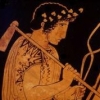


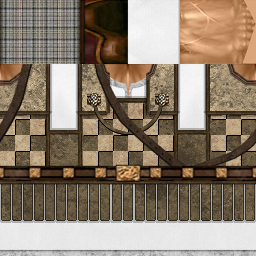
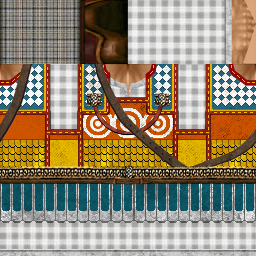
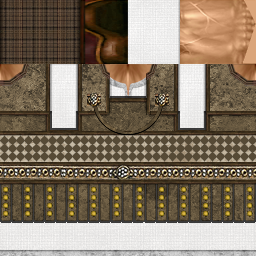
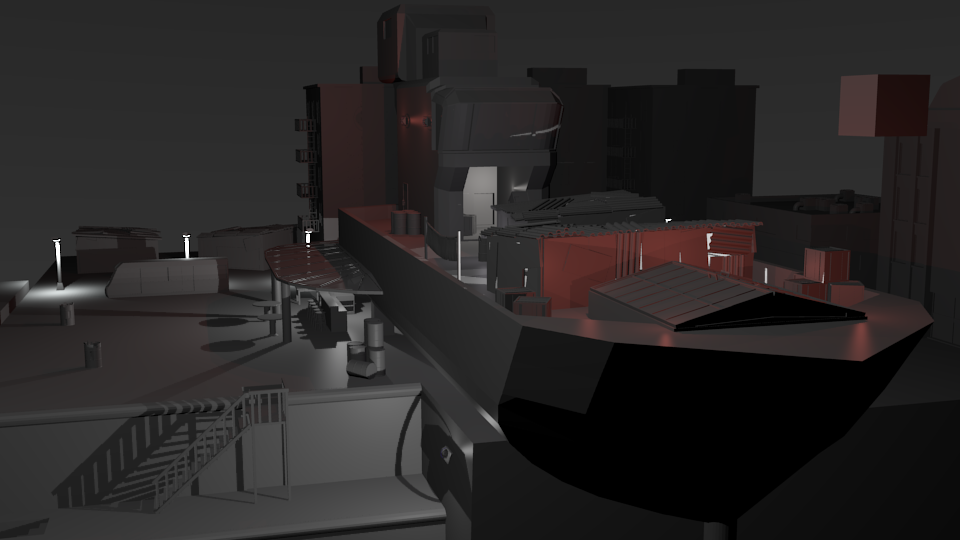
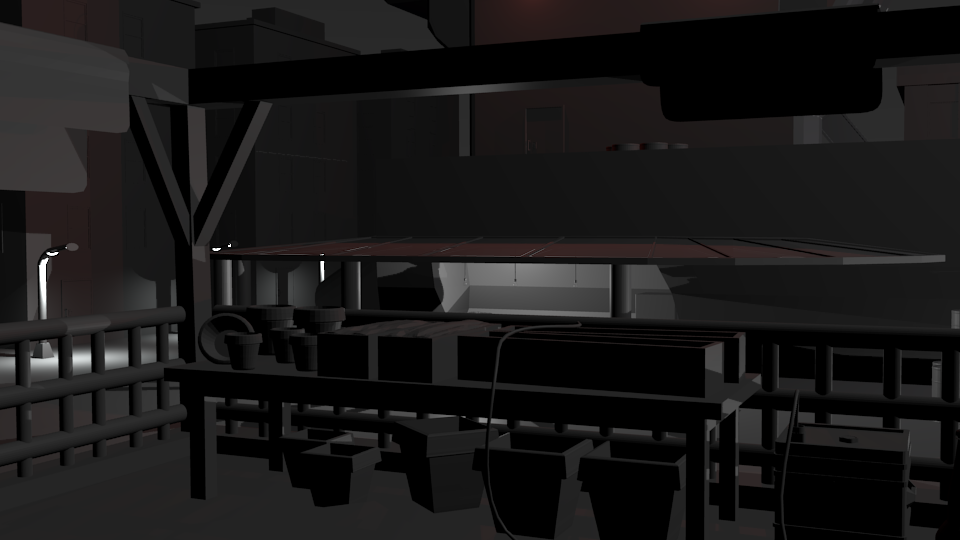
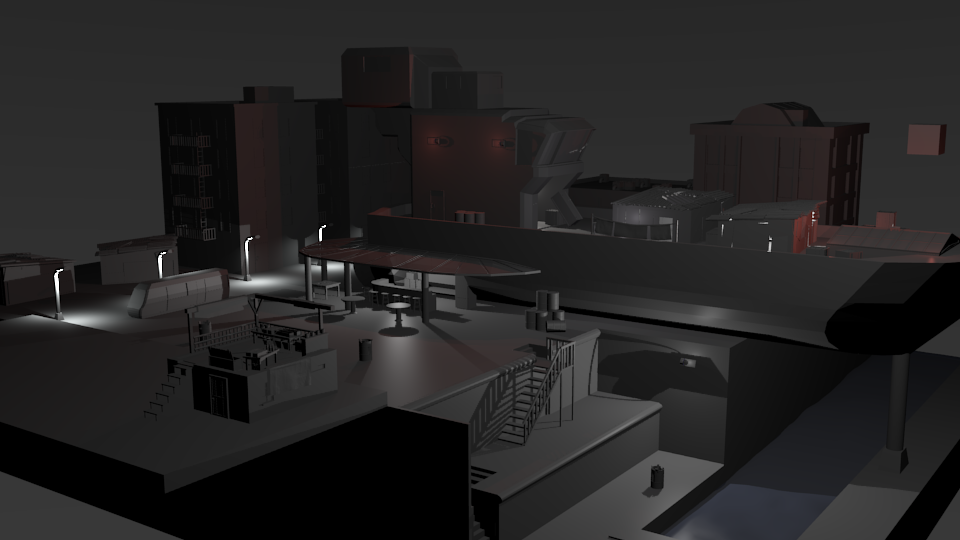

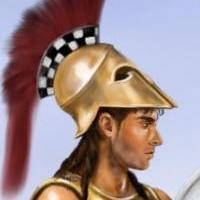

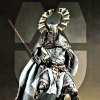


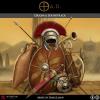
.thumb.png.ce58cea22940c255f5b0a735d5abee36.png)


